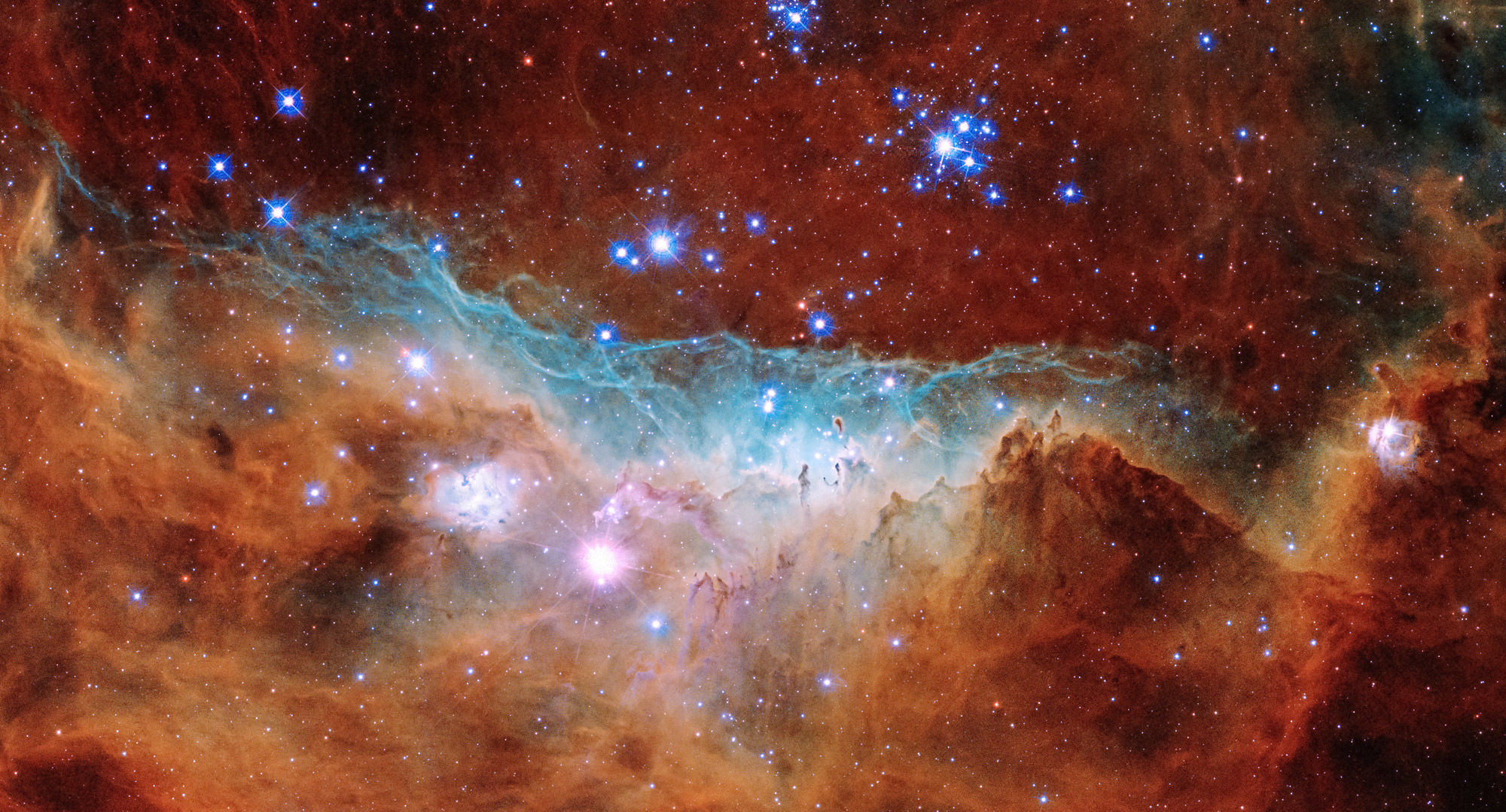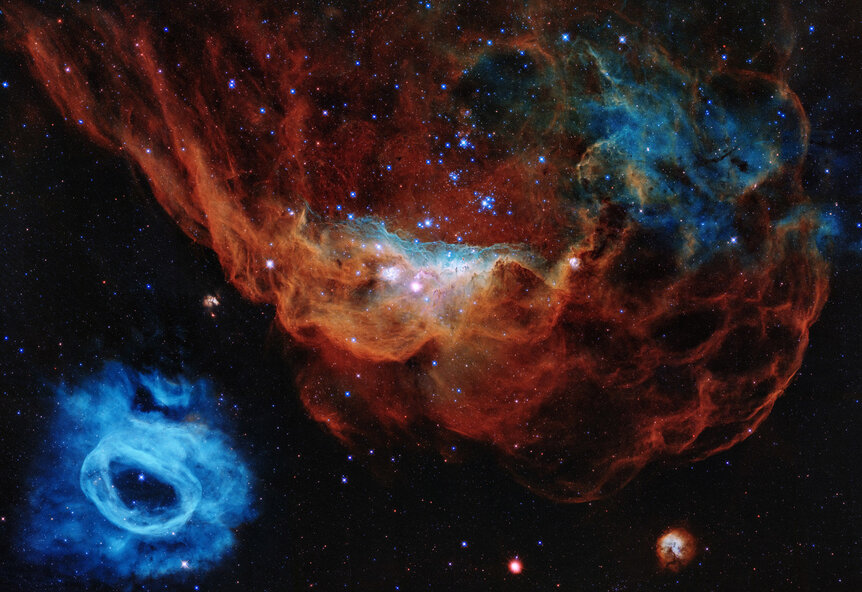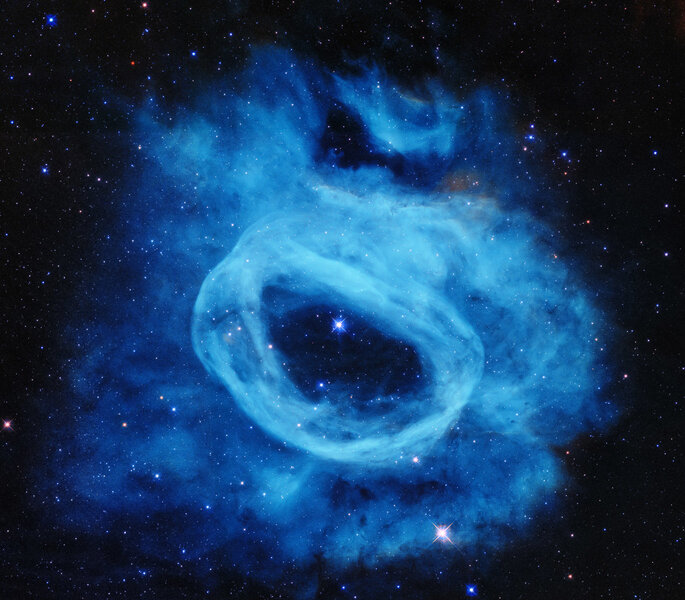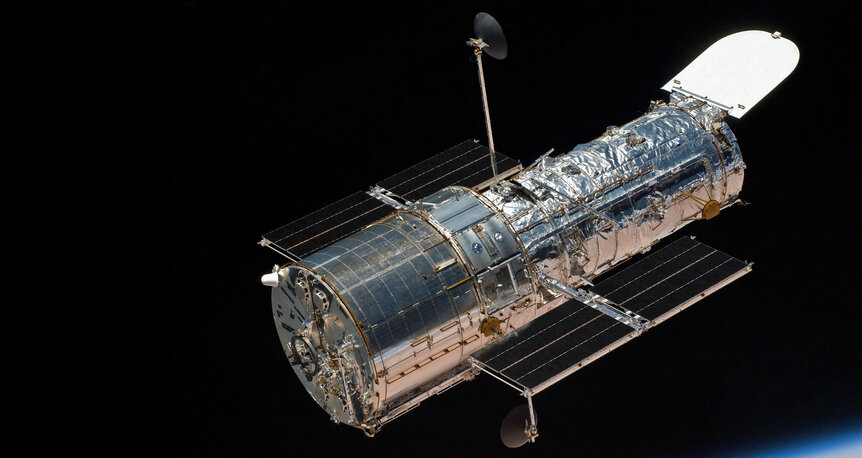Create a free profile to get unlimited access to exclusive videos, sweepstakes, and more!
Cosmic beauty and terror mark the 30th anniversary of Hubble Space Telescope

Thirty years ago today, the Space Shuttle Discovery roared into space. Tucked away in its payload was a revolution in astronomy: The Hubble Space Telescope.
Although not the largest telescope in the world by a long shot, Hubble’s advantage was its destination. In space, hundreds of kilometers above the Earth's surface, there is essentially no air. Our atmosphere is constantly in motion, distorting and blurring light coming from distant objects. Above it, images taken are pinpoint sharp.
Our air absorbs ultraviolet and infrared light, so by observing from orbit cosmic objects emitting that light can be seen, allowing astronomers to collect more information from them.
Also, the sky glows faintly in visible light. It's very faint, but to a big telescope it's similar to observing at twilight instead of full-on dark. In space, the sky background is deeply black.
Now, of course, we've seen the fruits of that effort, with hundreds of gorgeous images from Hubble, and hundreds of thousands of individual observations of objects as close as Earth’s Moon to galaxies so far away we see them as they were when the Universe was an infant. We've seen planets, star clusters, galaxies, black holes… and of course, star-forming gas clouds.
For the 30th anniversary of Hubble launch, the folks in charge of the observatory have released a breathtaking image of just such a nebula — two, in fact: NGC 2014 and NGC 2020:
YEGADS.
Both nebulae are in the Large Magellanic Cloud, or LMC, a small satellite galaxy of our much larger Milky Way (to the eye from a dark site in the southern hemisphere, the LMC does look like a faint cloud hanging in the sky). Located roughly 160,000 light years away, it’s historically been classified an irregular galaxy, more or less shapeless, but recently has been reassessed as a nascent spiral, with a single arm tracing a wide path around it.
It's loaded with gas clouds (seriously, click that link) and is forming stars much more readily than the Milky Way is, and practically every image of it shows these nebulae, lit pinkish-red by stars in side them. That's what you’re seeing in NGC 2014, the ridiculously photogenic structure dominating the upper right of the anniversary image. Inside that gas is a cluster of stars, hundreds of stars all being born at the same time.
A small fraction of these stars are massive, much bigger, hotter, and brighter than the Sun. These emit a lot of ultraviolet light that illuminates and excites the hydrogen gas in the nebula, which responds by glowing in that reddish color. The stars also blow fierce winds of subatomic particles called stellar winds, like the Sun's solar wind but much more powerful. This profoundly affects the material around them, snowplowing it up into ridges and filaments. It also erodes away denser clumps of gas and dust like water in a creek creating a sandbar. What’s left are long finger-like projections that point back to the star eroding them. The most famous example of these are in the Eagle Nebula, the iconic Pillars of Creation. If you look carefully along the middle of NGC 2014 you’ll see them, pointing upwards to the bright stars above them.
As spectacular as NGC 2014 is, my eyes kept being drawn to NGC 2020, to its lower left. Glowing an odd blue-teal, it's clearly a different beast than its big sibling to the right. Even before I tracked down the science of it in various journal papers, the hairs on the back of my neck slowly raised up as I realized what I was looking at: A Wolf-Rayet star.
These incredibly massive stars are, simply put, monsters. They generate so much energy in their cores that they are immensely luminous, so powerful that they blow off their outer layers of gas into space, creating a roughly spherical cloud around them light years across. The star in the center of NGC 2020 is called HD 269748, and it's terrifying: It has a mass over 60 times the Sun's, and is nearly three million times more luminous than the Sun.
Three million. Replace the Sun with this star, and the Earth wouldn’t last long at all. I'm happy it's 160,000 light years away.
The star is still blowing a wind, which is what’s carving that hole in the center of the gas around it. And the blue color is another indicator of the star’s power. Although originally mostly hydrogen, the star’s core blew away that gas in the outer layers long ago. The hydrogen in the core fused to helium, and then helium to carbon and oxygen. That latter element in the outer layers was also blown away, and, lit by the intensely hot star, the oxygen glows at characteristic wavelengths in the blue and green part of the spectrum, giving NGC 2020 that ghostly color.
The scale of such stars is hard to grasp. But look at it this way: NGC 2014 to the right is a gas cloud birthing hundreds of stars, and while NGC 2020 is only a fifth of its size or so, it’s generated by a single star.
So, yeah.
… but this is something to ponder. Looking at this image you’re naturally going to gawk at NGC 2014, gorgeous and splashy and ostentatious, colorful and intricate. But that may come at the price of not noticing the weird blue bubble to its lower left, or at best merely glancing at it before your attention is dragged back to the carnival going on with NGC 2014.
But with our understanding of science, of astronomy, we can know that NGC 2020 is where the fireworks are really happening, and where they will ramp up considerably when that star explodes as a supernova, probably in a million years or less. If you think this region of space is spectacular now, oh, just give it some time. It hasn't even gotten started yet.
As much as I like this image for all the reasons I’ve given here, there is another one, too: It's a lovely allegory for Hubble itself. As much science as Hubble has done over the last three decades, I still wonder if its lasting impact will be in the public perception of science. Over all this time, the people who designed, built, and observed with Hubble have used it to bring the heavens to Earth, allowing others to see the sky in a new way, to appreciate the beauty and artistry of it. And, if I and so many others have done our jobs well, helped people understand what they're seeing, too.
One final thought: Looking at this image I had to smile. After all, on the 30th anniversary of Hubble's launch in 1990, what could be more appropriate than looking at NGC 2020?


















